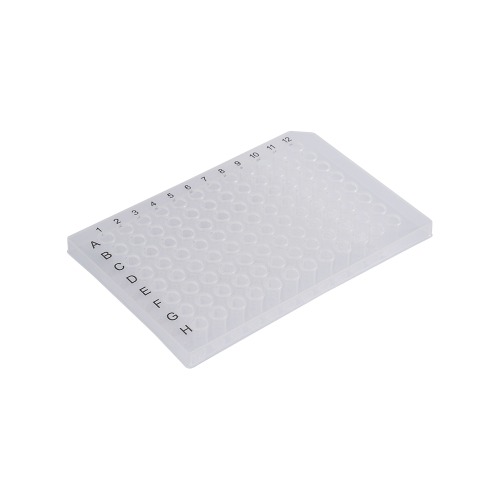Jul 01,2022
Choosing the right PCR plate is important to ensure accurate and reliable results in PCR experiments. Here are some factors to consider when selecting a PCR plate:
Plate Type:PCR plates are available in different types, such as standard, low profile, skirted, semi-skirted, and non-skirted. Standard PCR plates have a height of 9-10 mm and can hold a maximum volume of 200 μL. Low profile PCR plates have a height of 5-6 mm and can hold a maximum volume of 100 μL. Skirted plates have a surrounding rim to facilitate easy handling, while semi-skirted plates have a partial rim for easy labeling. Non-skirted plates do not have a surrounding rim.Well Configuration:PCR plates come in different well configurations, such as 96-well, 384-well, and 1536-well plates. 96-well plates are the most commonly used, while 384-well and 1536-well plates are used for high-throughput applications. Consider the number of samples you need to run and the size of your thermal cycler when choosing the well configuration.Plate Material:PCR plates can be made from different materials, such as polypropylene, polycarbonate, and polyethylene. Polypropylene is the most commonly used material because it is durable, resistant to chemicals, and has low DNA-binding properties.Quality:Choose PCR plates from reputable manufacturers to ensure that they are of high quality and free from contaminants that can affect your results.Compatibility:Ensure that the PCR plate you choose is compatible with your thermal cycler and any other equipment you will be using in your PCR experiment.Additional Features:Consider any additional features that may be important for your experiment, such as optical clarity for real-time PCR, barcoding for sample identification, and sealing options for preventing evaporation or contamination.
By considering these factors, you can choose the PCR plate that best fits your experimental needs and optimize your PCR results.Meanwhile,PCR plates play a crucial role in Polymerase Chain Reaction (PCR), a widely used technique for amplifying DNA sequences. PCR plates are designed to hold the reaction mixtures and provide a platform for thermal cycling, which involves repeated cycles of heating and cooling to denature, anneal, and extend the DNA.Here are some reasons why PCR plates are important:
Sample throughput:PCR plates can accommodate multiple samples in a compact and organized manner, allowing for high sample throughput and increased efficiency in PCR experiments. This is particularly important in high-throughput applications such as genotyping and gene expression analysis.
Accurate and reproducible results:PCR plates are designed to minimize cross-contamination between samples and provide consistent heating and cooling to ensure accurate and reproducible results. The well design and plate material can prevent evaporation and reduce DNA binding, which can affect the yield and quality of the amplified product.Compatibility:PCR plates are compatible with a wide range of thermal cyclers and other PCR equipment, making them a versatile and convenient tool for molecular biology research.Time and cost-effective:PCR plates are a time and cost-effective alternative to traditional tube-based PCR, allowing for a high throughput and a reduction in reagent and sample consumption.
In summary, PCR plates are an essential component of the PCR workflow, providing a platform for efficient and accurate DNA amplification. Choosing the right PCR plate can significantly impact the success of your PCR experiment and ensure reliable and reproducible results.



 Español
Español
 Français
Français
 Deutsch
Deutsch
 عربى
عربى








